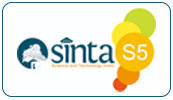Discovering EFL Learners’ Reading Strategis at STKIP Muhammadiyah Aceh Barat Daya
Abstract
This study aimed to point out (1) whatkinds of reading strategies used by EFL students at STKIP Muhammadiyah Aceh Barat Daya? and (2) what is the common reading strategies used by those students?A quantitative research design was utilized to collect the data in which a questionnaire was used as instrument. The questionnaire consisted of items to gain the students’ responses toward six categories of Reading Strategies implementation on their reading ability, namely: memory, cognitive, compensation, metacognitive, affective, and social reading strategies. In total 50 students ofEnglish Education Department at STKIP Muhammadiyahfrom different semester were involved as participants.The findings of the study revealed that(1)EFL students at English Education Department used the six categories of reading strategies both direct and indirect reading strategies such as cognitive, compensation, affective, social, metacognitive and memory strategies. (2) The average range of the sixreading strategies obtained from EFL students at English Education Departmentwere above 3.5 to 4.4. This indicated that the common strategies used by EFL students at STKIP Muhammadiyah Aceh Barat were cognitive, compensation, affective, social, metacognitive, and memorystrategies.
Keywords: Reading and Reading Strategy
Full Text:
PDFReferences
Anderson, R. C., & Biddle, W. (1975). On asking people questions about what they are reading. In G. H. Bower (Ed.), The psychology of learning and motivation (Vol.9, pp. 9-129). New York: Academic Press.
Ashby, J., & Rayner, K. (2006). Literacy development: insights from research on skilled reading. In D. Dickinson & S. Neuman (Eds.), Handbook of early literacy research (Vol.2, pp.52-63). NewYork: Guilford Press.
Baker, L. (2002). Metacognition in comprehension instruction. In C. Block & M. Pressley (Eds.), Comprehension instruction: Research-based best practices (pp.77-95). New York: Guilford Press.
Chamot, A., & O’Malley, J.M. (1990). Strategies used by second language learners. Cambridge: Cambridge University Press.
Chapelle, C, A., & Susan, H. (2009). Reading in a Second Language. Cambridge: Cambridge University Press.
Dewitz, P., Carr, E., &Patberg, J. (1987). Effects of inference training on comprehension and comprehension monitoring. Reading Research Quarterly 22, 99-122.
Ebrahimi. (2012). A Comparison of different reading strategies in reading poems By EFL readers. International Conference on Language, Mediasand Culture. University Of Technology Malaysia.
Hung, D. M., & Ngan, V. P. T. (2015). Investigating reading strategies Used By Efl Students At Dong Thap University. Asian Journal of Education Research. Vietnam: Dhong Thap University.
Koda, K, (2005). Insights into second language reading. New York: Cambridge University Press.
Kung, S.-S. (2013). Exploring the useful reading strategies among EFL college students In Taiwan. Scientific Research. Taiwan: Ming Dao University.
Oppenheim, A. N. (2000). Questionnaire design, Interviewing and Attitude measurement. (newed). London: Oxford University Press.
Oxford, R. L. (1990). Language learning strategis: What every teacher should know. United State: University of Alabama.
Oxford, R. L. (2003) Language learning style and strategies: An overview. Learning Styles & Strategies/Oxford, GALA
Pressley, M., & Block, C. (2002). Summing up: What comprehension instruction could be.In C. Block and M. Pressley (Eds.), Comprehension instruction: Research-based best practice (pp.383-92). New York: Guilford Press.
Pressley, M., Johnson, C., Symons, S., McGoldrick, J., & Kurita, J. (1989). Strategies that improve memory and comprehension of what is read. Elementary School Journal 90, 3-32
Pressley, M., &Woloshyn, V. (1995). Cognitive strategy instruction that really improves children’s academic performance. Cambridge. MA: Brookline Books.
Rosenshine, B., Meister, C., & Chapman, S. (1996). Teaching students to generate question: A review of educational research 66, 181-221.
Singhal, M. (2001). Reading proficiency, Reading strategies, Metacognitive awareness and L2 readers.The Reading Matrix. (Retrieved on January, 19 2018 from http://portal.cuc.edu.ve).
Taylor, B. (1992). Text structure, comprehension and recall. In S. Samuels &A. Farstrup (Eds.), What research has to say about reading instruction (2nd ed., pp.220-35). Newark, DE: IRA.
Trabasso, T., & Bouchard, E. (2002). Teaching reader how to comprehend texts strategically. In C. Block & M. Pressley (Eds.), Comprehension instruction: Research-based best practices (pp.176-200). New York: Guilford Press.
Urquhart, S., & Weir, C. (1998). Reading in a second language: Process, product and practice. New York : Longman.
Vacca, R., &Vacca. J. (1999). Content area reading (6thed.). New York: Longman
Wooley, G. (2011). Reading Comprehension: Assisting Children With Learning Difficulties. (chap. 2). (Retrived on February, 3 2018 from http://www.blogspot.com).
Yuill, N., & Oakhill, J. (1991). Children’s problem in text comprehension. Cambridge: Cambridge University Press.
Zwiers, J. (2010) Building reading comprehension Habit In Grade 6-12: A Toolkit Of Classroom Activities.(2nd ed). California: Stanford University.
DOI: https://doi.org/10.37598/pjpp.v6i1,%20April.632
Refbacks
- There are currently no refbacks.

Pedagogik: Jurnal Ilmiah Pendidikan dan Pembelajaran Fakultas Tarbiyah Universitas Muhammadiyah Aceh by Fakultas Agama Islam Universitas Muhammadiyah Aceh is licensed under a Creative Commons Attribution 4.0 International License.
Based on a work at http://ejournal.unmuha.ac.id/index.php/pedagogik.









